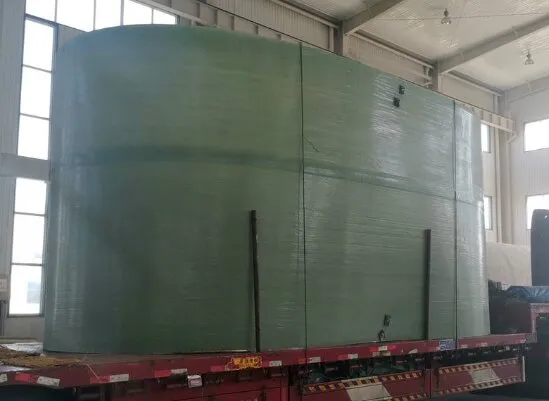
-
 Afrikaans
Afrikaans -
 Albanian
Albanian -
 Amharic
Amharic -
 Arabic
Arabic -
 Armenian
Armenian -
 Azerbaijani
Azerbaijani -
 Basque
Basque -
 Belarusian
Belarusian -
 Bengali
Bengali -
 Bosnian
Bosnian -
 Bulgarian
Bulgarian -
 Catalan
Catalan -
 Cebuano
Cebuano -
 China
China -
 China (Taiwan)
China (Taiwan) -
 Corsican
Corsican -
 Croatian
Croatian -
 Czech
Czech -
 Danish
Danish -
 Dutch
Dutch -
 English
English -
 Esperanto
Esperanto -
 Estonian
Estonian -
 Finnish
Finnish -
 French
French -
 Frisian
Frisian -
 Galician
Galician -
 Georgian
Georgian -
 German
German -
 Greek
Greek -
 Gujarati
Gujarati -
 Haitian Creole
Haitian Creole -
 hausa
hausa -
 hawaiian
hawaiian -
 Hebrew
Hebrew -
 Hindi
Hindi -
 Miao
Miao -
 Hungarian
Hungarian -
 Icelandic
Icelandic -
 igbo
igbo -
 Indonesian
Indonesian -
 irish
irish -
 Italian
Italian -
 Japanese
Japanese -
 Javanese
Javanese -
 Kannada
Kannada -
 kazakh
kazakh -
 Khmer
Khmer -
 Rwandese
Rwandese -
 Korean
Korean -
 Kurdish
Kurdish -
 Kyrgyz
Kyrgyz -
 Lao
Lao -
 Latin
Latin -
 Latvian
Latvian -
 Lithuanian
Lithuanian -
 Luxembourgish
Luxembourgish -
 Macedonian
Macedonian -
 Malgashi
Malgashi -
 Malay
Malay -
 Malayalam
Malayalam -
 Maltese
Maltese -
 Maori
Maori -
 Marathi
Marathi -
 Mongolian
Mongolian -
 Myanmar
Myanmar -
 Nepali
Nepali -
 Norwegian
Norwegian -
 Norwegian
Norwegian -
 Occitan
Occitan -
 Pashto
Pashto -
 Persian
Persian -
 Polish
Polish -
 Portuguese
Portuguese -
 Punjabi
Punjabi -
 Romanian
Romanian -
 Russian
Russian -
 Samoan
Samoan -
 Scottish Gaelic
Scottish Gaelic -
 Serbian
Serbian -
 Sesotho
Sesotho -
 Shona
Shona -
 Sindhi
Sindhi -
 Sinhala
Sinhala -
 Slovak
Slovak -
 Slovenian
Slovenian -
 Somali
Somali -
 Spanish
Spanish -
 Sundanese
Sundanese -
 Swahili
Swahili -
 Swedish
Swedish -
 Tagalog
Tagalog -
 Tajik
Tajik -
 Tamil
Tamil -
 Tatar
Tatar -
 Telugu
Telugu -
 Thai
Thai -
 Turkish
Turkish -
 Turkmen
Turkmen -
 Ukrainian
Ukrainian -
 Urdu
Urdu -
 Uighur
Uighur -
 Uzbek
Uzbek -
 Vietnamese
Vietnamese -
 Welsh
Welsh -
 Bantu
Bantu -
 Yiddish
Yiddish -
 Yoruba
Yoruba -
 Zulu
Zulu
grp pipes and fittings for ship building
GRP Pipes and Fittings for Shipbuilding
Glass Reinforced Plastic (GRP), also known as Fiberglass Reinforced Plastics (FRP), has increasingly become a popular choice in shipbuilding and marine applications. This material is celebrated for its exceptional strength-to-weight ratio, corrosion resistance, and ease of installation. As the maritime industry seeks to optimize performance while reducing environmental impacts, GRP pipes and fittings present a compelling solution.
One of the primary advantages of GRP pipes and fittings is their lightweight nature. Compared to traditional materials like steel and metal, GRP is significantly lighter, which translates to lower overall weight for the vessel. This reduction in weight can lead to improved fuel efficiency, allowing ships to carry larger loads or traverse longer distances without increasing operational costs. The lightweight characteristic of GRP makes handling and installation more manageable, ultimately speeding up construction schedules.
Corrosion resistance is another significant benefit of GRP materials. Ships are frequently exposed to harsh marine environments, including saltwater, which can cause significant deterioration to metals over time. GRP, being non-corrosive, maintains its integrity under such conditions, ensuring longevity and reducing maintenance costs. This feature is particularly crucial in systems where water exposure is frequent, such as in ballast and bilge systems, where traditional materials can suffer from corrosion-related failures.
The versatility of GRP pipes and fittings allows for their use in various applications within shipbuilding
. They are suitable for transporting water, wastewater, chemicals, and fuels without the risk of leaking or contaminating the environment. Moreover, GRP installations can be designed to meet specific requirements, such as thermal insulation or fire resistance, further enhancing their applicability in a range of systems aboard vessels.grp pipes and fittings for ship building

Installation of GRP pipes and fittings is streamlined due to their light weight and modular design. This design allows for easy connections and adaptability to various layouts, simplifying the installation process while minimizing labor costs. Additionally, GRP materials can be fabricated in complex shapes and sizes, accommodating the unique structural requirements of different vessels.
From an economic perspective, the use of GRP pipes and fittings in shipbuilding can lead to significant savings over time. While the initial investment for GRP materials may be higher than traditional alternatives, the overall lifecycle cost, factoring in reduced maintenance, lower weight, and enhanced durability, makes GRP an attractive option. The ability to fabricate custom components also allows shipbuilders to optimize designs, improving efficiency and performance throughout the vessel's operational life.
Moreover, in an era where environmental considerations are paramount, GRP materials align with sustainable practices in shipbuilding. The durability and non-corrosive nature of GRP contribute to reduced waste through longer service life and fewer replacements. Additionally, advancements in manufacturing processes for GRP are continually reducing energy consumption and waste, making these materials even more environmentally friendly.
In conclusion, the integration of GRP pipes and fittings in shipbuilding represents a progressive approach to modern maritime engineering. With their lightweight, corrosion-resistant properties, versatility, ease of installation, and potential for cost savings, GRP materials are poised to play a pivotal role in the future of ship design and construction. As the industry evolves to meet the challenges posed by environmental sustainability and efficiency, GRP offers a robust solution that addresses these needs effectively. Embracing GRP technology can lead to not only enhanced vessel performance but also a more sustainable future for the maritime industry.









